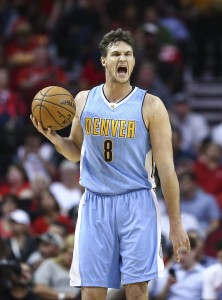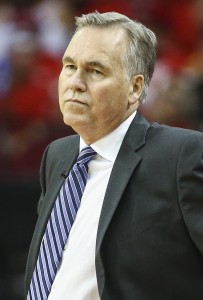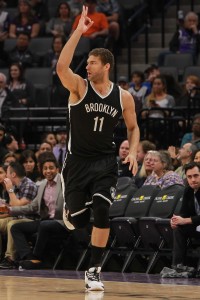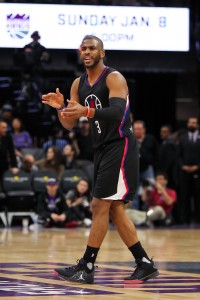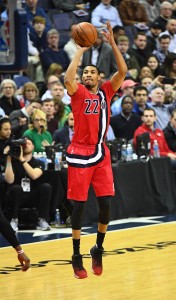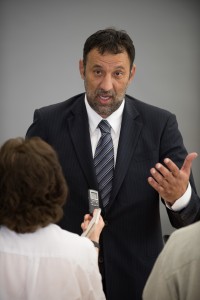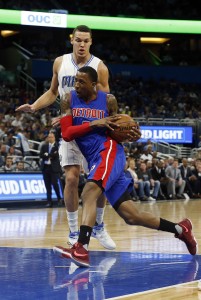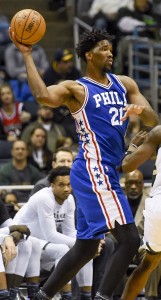Through the first half of the 2016/17 season, the 11-30 Heat looked like the greatest threat to the Celtics for the No. 1 spot in the NBA’s lottery rankings.
If the Heat had performed the entire season like they did the second half, when they went 30-11, they would’ve be the greatest threat to Boston for the No. 1 seed in the Eastern Conference.
That red-hot second-half run didn’t earn Miami a spot in the postseason, but it significantly changed the team’s outlook for 2017/18. While president Pat Riley may still use the dreaded R-word (“rebuild”), a 25-win season likely would’ve seen the Heat undertaking a multiyear retooling process — instead, Riley has hinted at an accelerated rebuild with an eye toward getting the club back in contention within the next couple years.
As they look to build a roster capable of getting back into the playoffs, here are five key questions facing the Heat this offseason:
1. Will the Heat pursue a “whale”?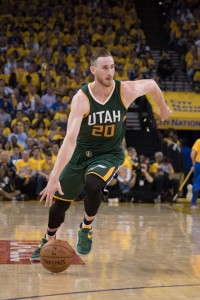
Even when the Heat aren’t a title contender, they’re a popular destination for free agents. South Beach is a draw, as is Florida’s lack of income tax, but the culture Riley has built in Miami is perhaps the strongest selling point. That’s what gave the Heat the opportunity to sit down with Kevin Durant during his free agency last summer, despite having the weakest roster of the six teams Durant considered.
At season’s end, Riley suggested that the Heat wouldn’t be in the market for a “whale” this offseason, but the club may not be able to help itself. A recent report suggested that the Jazz view Miami as a legit threat to poach free-agent-to-be Gordon Hayward, who reportedly has interest in the Heat.
Hayward would be a terrific fit in Miami, as a scorer and shooter capable of playing at the three or four, depending on the lineup around him. A maximum salary contract, or something close to it, would eat into the Heat’s cap room in a major way, but the team could afford it, and Hayward – who just turned 27 – might be worth the investment.
2. Will Dion Waiters and James Johnson be re-signed?
After realizing last summer that Dwyane Wade wouldn’t be returning, the Heat completed a flurry of signings using their excess cap room, and many of these contracts were for one year. That allowed the team to maintain its flexibility for this summer, but it has created a tricky situation in instances where Miami wants to re-sign some of those players.
Waiters and Johnson are the two most obvious examples — both players will be in line for big raises after earning $3MM and $4MM respectively, but the Heat don’t hold either player’s Bird rights, meaning they’ll need to use cap room to re-sign them.
As it stands, the Heat have more than enough space to sign both players, but that could change if they pursue Hayward or another top-tier free agent. Even if the Heat are able to re-sign both Waiters and Johnson, locking them up on fair, market-level deals would mean dedicating most of their available cap room to retaining last year’s roster. Unless both Waiters and Johnson are willing to accept discounted offers, it might make sense for the Heat to just bring back one of them, rather than both.
Read more
3. Will Wayne Ellington and Josh McRoberts be retained?
As opposed to Waiters and Johnson, who are free agents the Heat want to bring back, Ellington and McRoberts are under team control, but may become expendable if more cap room is needed for other players.
In Ellington’s case, the team holds a $6.27MM option on him for the 2017/18 season. For a player who made 2.4 three-pointers per game at a 37.8% rate, that price is certainly reasonable. However, Ellington’s days in Miami may be numbered if the team decides it needs that $6MM+ in cap room to sign or retain an impact player.
Ellington’s salary doesn’t become guaranteed until the end of the July moratorium, so the club should have plenty of time to determine its free agent options before a final decision on the 29-year-old sharpshooter is required.
As for McRoberts, he has already picked up his own player option to stick with the team, but that doesn’t guarantee him a spot on the ’17/18 roster. If they waive him and stretch his salary, the Heat could slice McRoberts’ $6MM cap hit to $2MM, easily creating an extra $4MM in cap room. Nagged by injuries in recent seasons, the 30-year-old big man has only appeared in 81 games in three years for Miami. He may be expendable, particularly if the Heat have lingering concerns about his foot.
4. Is Justise Winslow ready for a breakout year?
The Heat’s impressive second-half run came without 2015 first-rounder Justise Winslow in the lineup. Winslow continues to rehab a shoulder injury, and is expected to be ready to go for the 2017/18 season, but he remains a wild card for the franchise.
On one hand, Winslow is still just 21 years old, and his tremendous upside and very affordable salary make him an appealing trade asset if the Heat are looking to acquire an impact veteran. However, those traits also make him very intriguing to the Heat as a possible breakout candidate. With no guarantee that James Johnson returns, Winslow could be in line for a key role as a wing player capable of defending multiple positions — if he’s ready for it.
5. What will the Heat do with their lottery pick?
Unless their 2018 first-round pick lands in the top seven, the Heat will send it to Phoenix, so Miami’s 14th overall selection this season may be the team’s last chance for a couple years to add a young, highly-regarded prospect.
The Heat could go in a number of directions at No. 14, depending on how the rest of the lottery plays out. Swingmen like Donovan Mitchell, Justin Jackson, and Terrance Ferguson may still be on the board; three-point specialist Luke Kennard could also be available; if the Heat want to go big, Zach Collins and John Collins may be options.
If Riley and the Heat really want to roll the dice, they could target a high-upside player coming off an injury, such as Harry Giles or OG Anunoby. It’s possible that – after their experience with Chris Bosh – the Heat would shy away from players with major health concerns, but Riley has shown a willingness in the past to roll the dice rather than playing it safe.
Here’s where things currently stand for the Heat financially:
Guaranteed Salary
- Hassan Whiteside ($23,775,506)
- Goran Dragic ($17,000,450)
- Josh McRoberts ($6,021,175) — Exercised player option.
- Tyler Johnson ($5,881,260)
- Justise Winslow ($2,705,040)
- Total: $55,383,431
- Note: Chris Bosh‘s $25,289,390 salary removed from cap due to medical ruling.
Player Options
Team Options
Non-Guaranteed Salary
- Wayne Ellington ($6,270,000)1
- Josh Richardson ($1,471,382)2
- Rodney McGruder ($1,312,611)3
- Okaro White ($1,312,611)4
- Total: $10,366,604
Restricted Free Agents
Cap Holds
- Udonis Haslem ($7,600,000)
- James Johnson ($4,800,000)
- Dion Waiters ($3,477,600) — Player option declined.
- No. 14 overall pick ($2,490,360)
- Luke Babbitt ($1,471,382)
- Willie Reed ($1,471,382) — Player option declined.
- Total: $21,310,724
Projected Salary Cap: $101,000,000
Maximum Cap Room: $38,232,519
- Taking into account their five guaranteed contracts, plus cap holds for a first-round pick and six empty roster spots, the Heat have a team salary of $62,767,481. However, that would mean waiving all their non-guaranteed players, including Richardson and McGruder, which is very unlikely — still, since those players are on veteran minimum salaries, they won’t cut into Miami’s cap room in a major way.
Footnotes:
- Ellington’s salary becomes fully guaranteed after July 6.
- Richardson’s salary becomes fully guaranteed after June 30.
- McGruder’s salary becomes partially guaranteed ($452,625) after August 1.
- White’s salary becomes partially guaranteed ($226,312) after July 1. Partial guarantee increases to $452,624 after August 1.
Salary information from Basketball Insiders and The Vertical was used in the creation of this post. Photo courtesy of USA Today Sports Images.
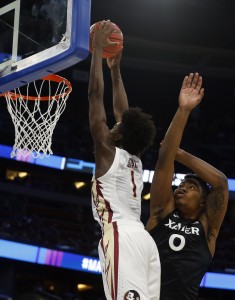 1. Who should they take with the No. 6 pick in the draft?
1. Who should they take with the No. 6 pick in the draft?